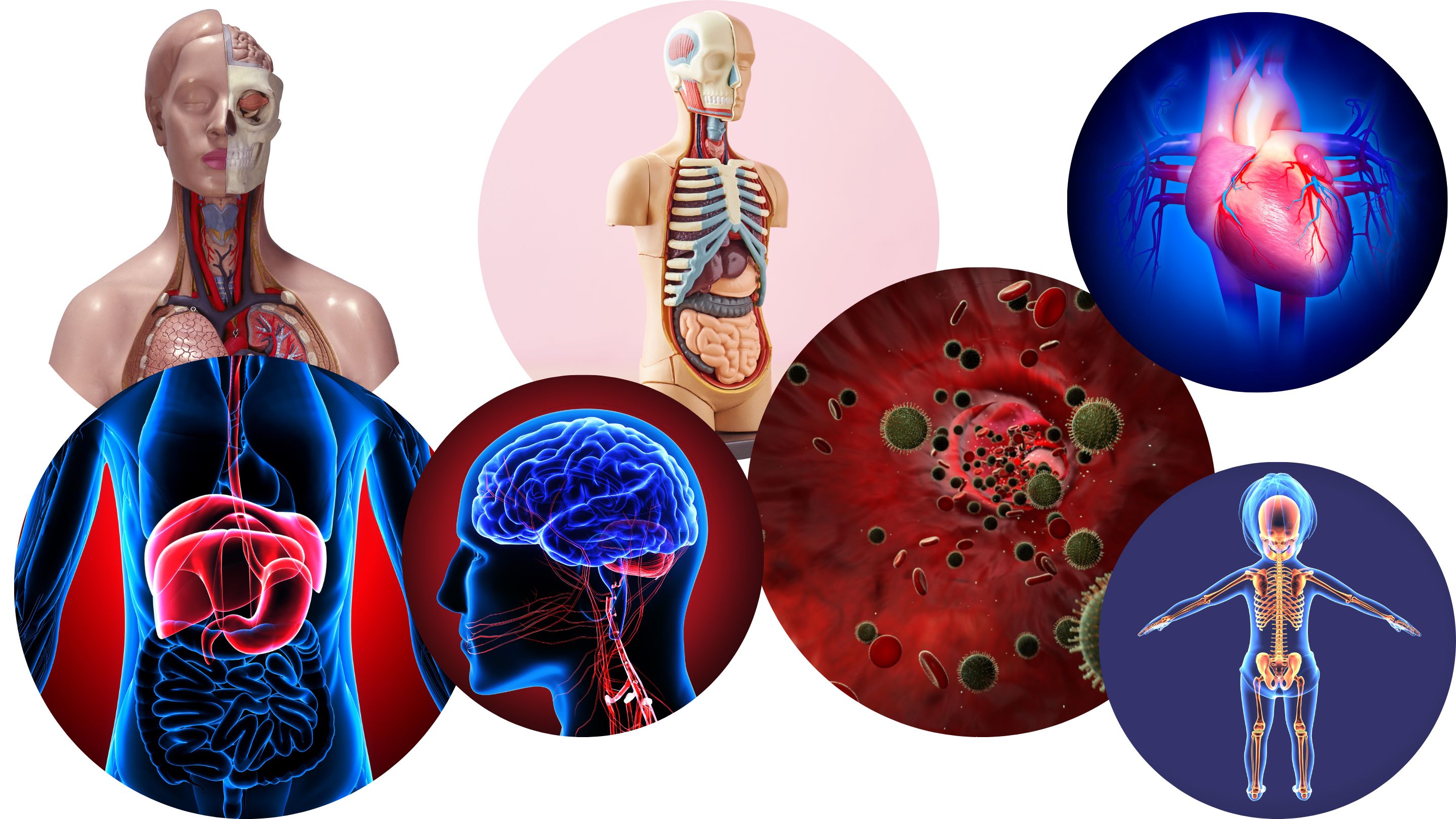
Anatomy is the branch of biology concerned with the study of the structure of organisms and their parts. It is a foundational course for students pursuing careers in medicine, biology, nursing, physical therapy, and other health-related fields. Here are some typical details you might find in an anatomy course:
Course Title:
Anatomy
Course Description:
Anatomy courses typically cover the structure of the human body, including its organs, tissues, and systems. Students learn about the skeletal, muscular, nervous, cardiovascular, respiratory, digestive, and other systems through lectures, laboratory work, and dissection of cadavers or anatomical models.
Course Objectives:
- Understand the basic anatomical terminology and principles.
- Identify and describe the structure and function of major organs and systems.
- Learn about the interconnections between different systems and their relevance to overall health and function.
- Develop hands-on skills through laboratory work and dissection.
Topics Covered:
1. Introduction to Anatomy: Basic terminology, body planes, and directional terms.
2. Skeletal System: Bones, joints, and cartilage.
3. Muscular System: Muscle types, structure, and function.
4. Nervous System: Central nervous system, peripheral nervous system, and autonomic nervous system.
5. Cardiovascular System: Heart, blood vessels, and circulation.
6. Respiratory System: Lungs, airways, and breathing mechanisms.
7. Digestive System: Mouth, esophagus, stomach, intestines, and associated organs.
8. Endocrine System: Hormonal glands and their functions.
9. Reproductive System: Male and female reproductive organs and their functions.
10. Integumentary System: Skin, hair, and nails.
11. Special Senses: Vision, hearing, taste, and smell.
12. Clinical Anatomy: Application of anatomy to clinical practice, including radiological anatomy.
Course Format:
- Lectures: Cover theoretical concepts and principles.
- Laboratory Sessions: Hands-on practical work, including dissection, anatomical models, and microscopy.
- Tutorials: Small group discussions, case studies, and problem-solving exercises.
- Assessments: Quizzes, midterms, final exams, and possibly a practical exam.
Textbooks and Resources:
- Recommended textbooks on human anatomy
- Online resources, including videos, interactive quizzes, and anatomy atlases
- Access to anatomical models, cadavers, and laboratory equipment
Prerequisites:
- Basic biology or life sciences course
- Some courses may require prior knowledge of chemistry or physiology
Assessment Methods:
- Quizzes and Homework Assignments
- Midterm Examinations
- Laboratory Reports
- Final Examination (Theory and Practical)
Recommended for:
- Pre-medical students
- Nursing and healthcare students
- Biology and life sciences students
- Physical therapy and sports science students
Career Opportunities:
- Medicine
- Nursing
- Physical Therapy
- Research
- Forensic Science
- Biomedical Engineering
- Health Education
Course Duration:
Anatomy courses can vary in length from one semester (approximately 16 weeks) to a full academic year (two semesters).
Conclusion:
Anatomy is a comprehensive course that provides essential knowledge about the structure and function of the human body. It combines theoretical learning with practical skills, making it an indispensable foundation for students pursuing careers in healthcare and related fields.
